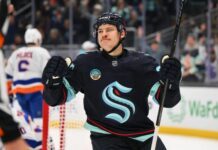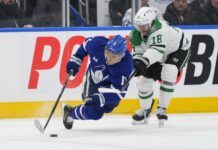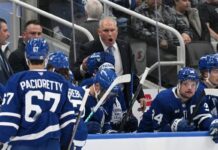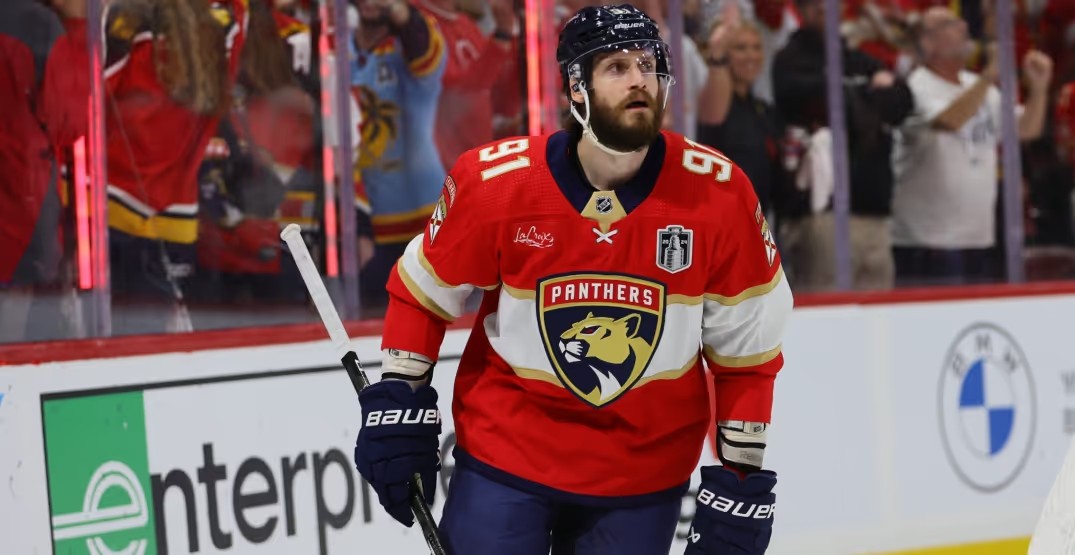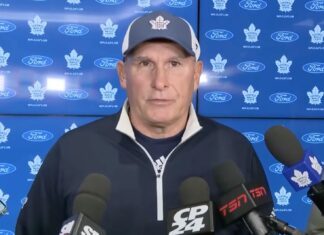As we await for the second wave of free agency to play out – including contract negotiations with Connor Dewar, Nick Robertson, a resolution on Jani Hakanpaa, and any other moves – I wanted to empty my notebook of thoughts on free agency now that we’ve had some time to digest.
Defense Market
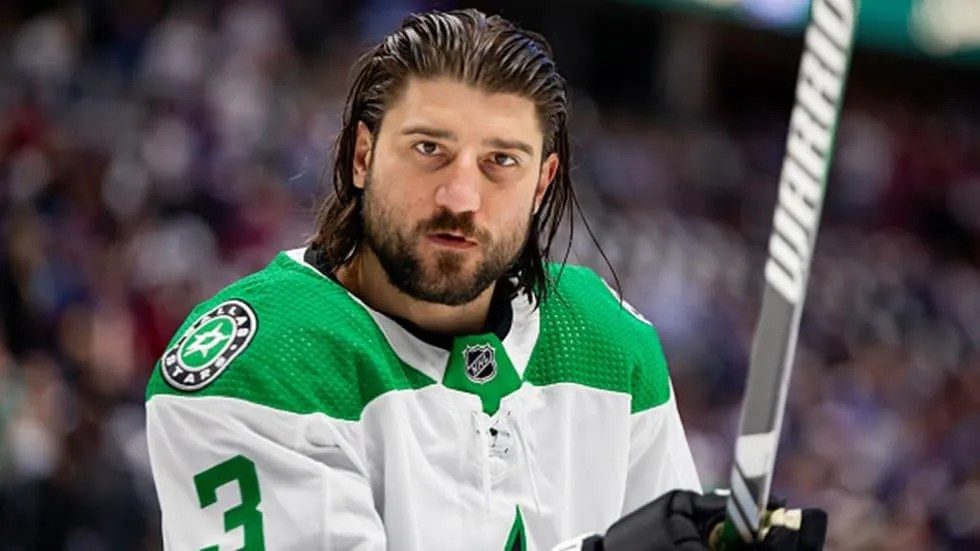
The Leafs stretched Oliver Ekman-Larsson’s term to push his annual average down to $3.5 million per season. Here is the list of defensemen who signed between $3-4 million:
- TJ Brodie, $3.75Mx2
- Shayne Gostisbehere – $3.2Mx3
- Ilya Lyubushkin – $3.25Mx3
- Joel Edmundson – $3.85×4
- Alexandre Carrier – $3.75Mx3
- Sean Walker – $3.6Mx5
- Alec Martinez – $4Mx1
- Brenden Dillon – $4Mx3
- Matthew Dumba – $3.75×2
- Ian Cole – $3.1Mx1
- Tyler Myers – $3Mx3
- Jalen Chatfield – $3Mx3
If you couldn’t – or didn’t want to – sign the big-ticket defensemen (Matt Roy, Brady Skjei, Nikita Zadorov, Brandon Montour, or Brett Pesce), this was the next tier of available defenders on the open market.
With Chris Tanev already signed, the Leafs wanted some more offense and puck movement from the back end. Ekman-Larsson has more career points than any of those defensemen listed, and other than Gostisbehere, he’s the best offensive defenseman at this point (his nine goals were second to Gostisbehere last season, to go along with his career pedigree. The difference is that he’s better defensively than Gostisbehere).
I think OEL is in the top half of that group and arguably the best all-around defenseman on the list (although most readers will know I am a fan of Alex Carrier, who I would have preferred given his age, and I also think highly of Brenden Dillon). You can see how the four-year term pushed OEL’s AAV down; worse players are making more money than he will next season.
OEL shades to the offensive side of things, which almost none of those guys do. The defensemen who are good offensively and solid overall top-four defensemen in this market were Skjei, Montour, and (technically) Noah Hanifin. They make $7 million, $7.14 million, and $7.35 million, respectively. You get what you pay for, so to speak.
If Liljegren finally takes the long-awaited step, it might be a bullet dodged that the Leafs didn’t pay another defenseman big money, but if he’s middling again, so is OEL, and Hakanpaa can’t play, there could be some regret in not simply paying a defenseman real top-four money.
Similarly, Tanev’s six years clearly pushed down his AAV. At this point in time, he’s a high-end, shutdown, top-four defenseman. There are several defensemen who got paid this summer, will make more than him next season, and are worse by varying degrees.
The Leafs have not had a defenseman like Tanev for decades, and it will be interesting to see the domino effect play out. Adding a legitimate top-four defenseman of his ilk might not be sexy, but it is a big, needle-moving addition if Tanev keeps performing as he has for the past few years.
Chris Tanev's 207 blocked shots in 2023-24 would be 31 more than any #LeafsForever player has recorded in a season since the stat has been tracked in 2005-06 (Carl Gunnarsson 176 in 2013-14). pic.twitter.com/6K2JJvc3lx
— Sportsnet Stats (@SNstats) July 2, 2024
They need to extract value from the contract immediately because it will be a different story three or four years from now.
Penalty Kill
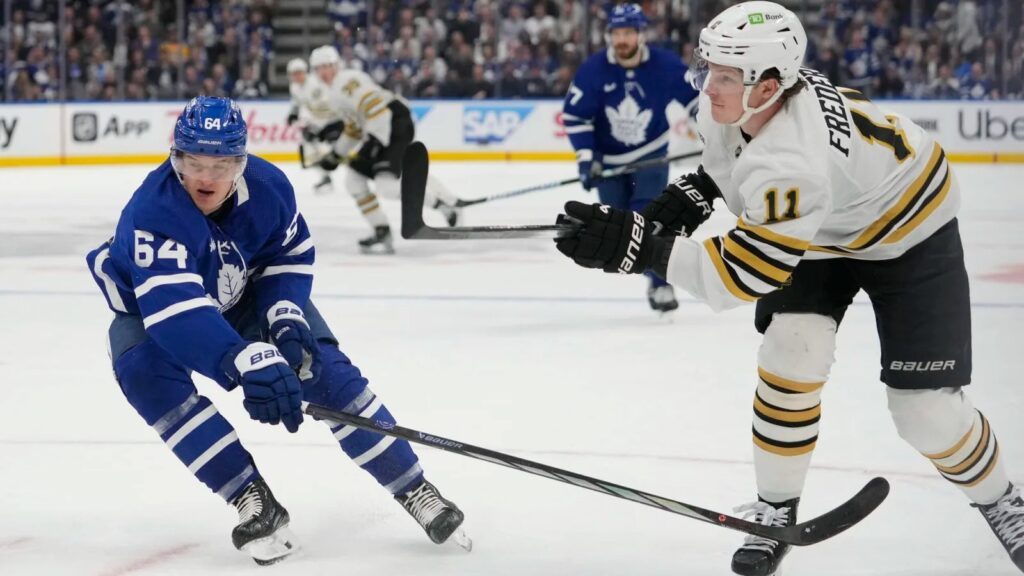
Related to the list of defensemen and the OEL signing — the penalty kill. If Jani Hakanpaa can’t play, it’s fair to wonder who will kill penalties on this team and how the units come together shorthanded. Jake McCabe and Tanev will be on the penalty kill, and Simon Benoit likely will. Who else is going to do the job if Hakanpaa can’t play?
OEL is a reasonable penalty killer in spot duty and was the Panthers’ fifth-most-used defenseman on the PK during the regular season and playoffs. Liljegren has played shorthanded at times, but he has not proven to be a viable option to this point (neither has Benoit, for that matter). Rielly is not the answer, either.
TJ Brodie led the Leafs’ defense in shorthanded time on ice per game last season, a role that Chris Tanev will almost certainly replace. Mark Giordano was their next regular, and when the Leafs acquired Joel Edmundson, he essentially replaced Giordano. Jake McCabe was next, followed by Ilya Lyubushkin, Simon Benoit, and William Lagesson.
The Leafs have brought in one penalty killer as of now until we receive clarity on Jani Hakanpaa.
It might seem like a small thing, but last summer, it was essentially the same situation on the PK. The team said goodbye to good penalty killers like Alex Kerfoot, Justin Holl, Noel Acciari, Ryan O’Reilly, Sam Lafferty, and Zach Aston-Reese. Some of those players didn’t offer much beyond the penalty kill, but the team missed them shorthanded, and the penalty kill was a big problem for long stretches of the regular season and in the playoffs.
The Leafs’ 23rd-ranked penalty kill in the regular season was the worst mark of any playoff team. In the first round of the postseason, they killed just 64.7 percent of their penalties against a Bruins team that entered with an ice-cold power play (they were 26th in the league after the trade deadline, then picked the Leafs apart once the playoffs started).
The Leafs have completely overhauled their coaching staff and added a new goalie. Chris Tanev will help. They’ve added no forwards yet, although last year’s trade deadline addition, Connor Dewar, could also be considered a full-season addition to the unit and should help. Is it going to be enough?
This team was second in goals last season and can easily create three talented lines as well as a decent checking fourth line. But who does the job on the penalty kill? David Kampf, Connor Dewar, Mitch Marner, Calle Jarnkrok, maybe Bobby McMann and/or Pontus Holmberg. It’s basically the same unit upfront that was fairly mediocre last season unless they think it was primarily the fault of the coaching staff/goaltending/defense – as in the forwards were generally adequate or can be coached to be.
It feels like two summers in a row where proper checkers and defensive forwards have been an afterthought.
Forward Market
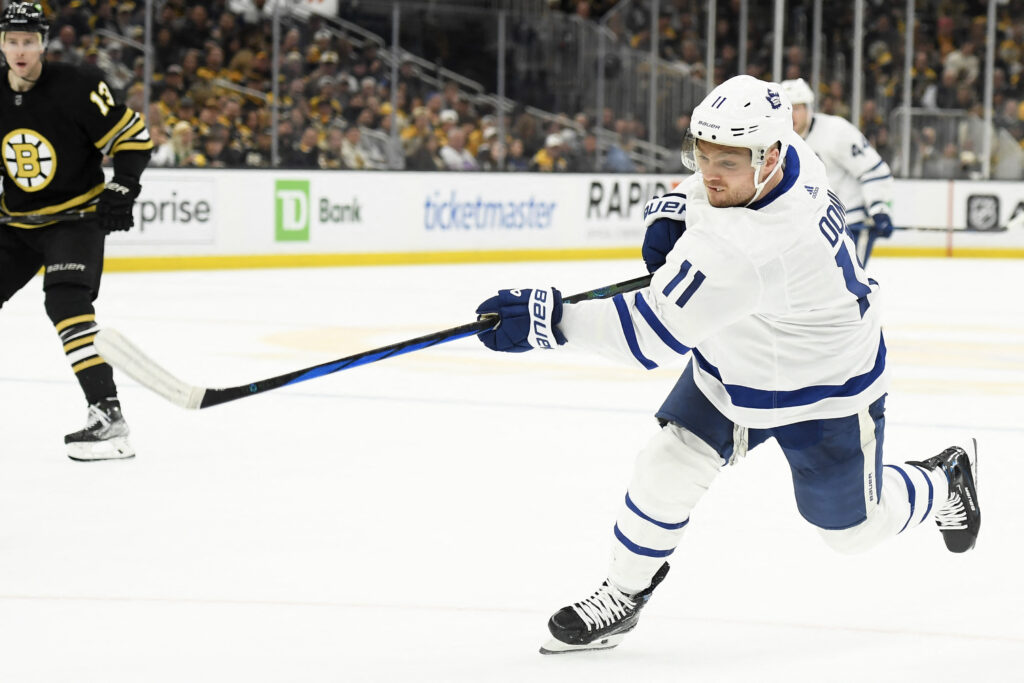
On the flip side, the forward market was full of high-priced tickets (Sam Reinhart, Steven Stamkos, Jake Guentzel), a collection of bigger mid-tier contracts (Jonathan Marchessault and Tyler Bertuzzi, to name a few, each made $5.5 million), and a third tier where Max Domi slotted in, making $3.75 million x four seasons.
The center market was predictably pricey relative to the talent available:
- Elias Lindholm – $7.75Mx7
- Chandler Stephenson – $6.25Mx7
- Sean Monahan – $5.5Mx5
- Yakov Trenin – $3.5Mx3
- Kevin Stenlund – $2Mx2
- Adam Henrique – $3Mx2
Almost all those contracts will be regrettable mistakes from the second the ink is dry. The only likely exception is Adam Henrique, who took a discount to stay on a Cup contender.
I’d argue Domi is more of a winger than a center, and if we stretch to include the $3-4 million wingers, here is the list:
- Jordan Martinook – $3.05Mx3
- Matt Duchene – $3Mx1
- Anthony Duclair – $3.5Mx4
- Warren Foegele – $3.5Mx3
- David Perron – $4Mx2
- Dakota Joshua – $3.25Mx4
- Stefan Noesen – $2.75Mx3
- Anthony Mantha – $3.5Mx1
- Jeff Skinner – $3Mx1
Domi outproduced all of those players save for Matt Duchene, who, like Henrique, took a discount to remain on a contender. Otherwise, Domi’s contract is relatively in line with his production (and Domi has a longer history of production than nearly half of the above list). Although he offers less defensively than most of those players, he also has the ability to play center, which none of those players do.
After all the dust settled, Domi’s contract settled where we thought it would at the time of signing—a completely fine AAV, but the term still feels high as the only two other players who received his length of term were younger than him. For a player who clearly wanted to be here and one who was unable to secure a long-term contract anywhere else to this point in his career, the Leafs paid the market rate and basically maxed out the term. Not exactly ruthless in negotiation.
Goaltending
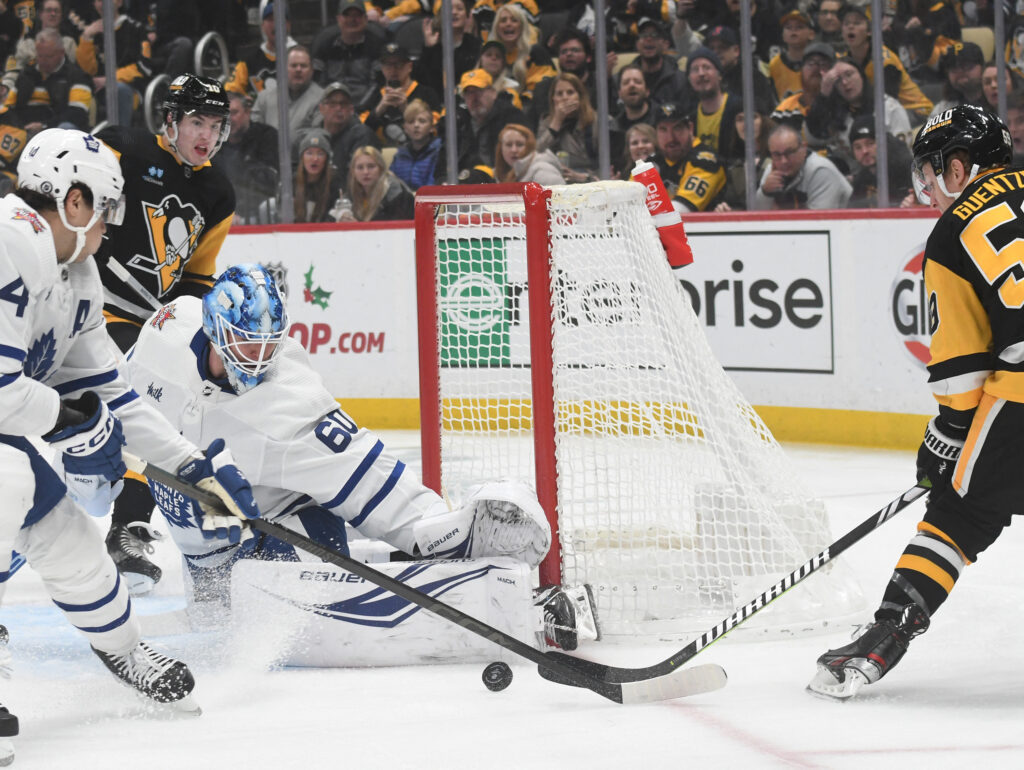
In net, the Leafs more or less did exactly what was expected. They signed Anthony Stolarz, a tandem goalie for Joseph Woll, and they signed a veteran third option in Matt Murray so that Dennis Hildeby won’t have to be rushed into action in the event of an injury.
I think it was the most sensible strategy, one we discussed for months. There’s no question there is some upside and intrigue to Stolarz, and Woll’s ability is clear if he can stay healthy.
In Anthony Stolarz, Toronto adds the regular season's 2nd best goaltender by GSAx per game (+0.56) to a tandem with the Playoff leader in GSAx per game (Joseph Woll, +1.09). pic.twitter.com/b5TYZmuJji
— Meghan Chayka (@MeghanChayka) July 1, 2024
The contract itself, $2.5 million x 2, was very much on par with the market, and if Stolarz can push closer to 40 games instead of ~27 he’s played the last few seasons, it’ll be a bargain. The rest of the goalie market played out as follows:
- Laurent Brossoit – $3.3Mx2
- Cam Talbot – $2.5Mx2
- Alex Nedjelkovic – $2.5Mx2
- Scott Wedgewood – $1.5Mx2
- Ilya Samsonov – $1.8Mx1
- Kaapo Kähkönen – $1Mx1
Stolarz’s terms are right in line with the cohort above.
However, it’s worth noting that the Leafs’ two goalies have never played more than 28 games in an NHL season. There’s no ignoring it. I understand the plan – I’d have done the same – but it’s fair to acknowledge this could be an unmitigated disaster.
That’s why a veteran third goalie was always needed, and similar to last year with Martin Jones, it will be important that Murray clears waivers and remains in the system. When the Leafs first acquired Murray, he played 26 games with a .903 save percentage. Generally speaking, he was passable (Jones played 22 games with a .902 save percentage last season, for reference).
It’s an interesting story as Murray has an estimated career earnings of roughly $30 million, he has two Cups to his name, and on those two factors alone, he might not necessarily need to scratch and claw his way to extending his career. But he’s agreed to potentially ride the bus in the minors and work his way back up. He had already done so at the end of last season, playing three games with the Marlies despite virtually no chance of appearing for the Leafs in the playoffs. It would be a cool story, to say the least, and based on Stolarz’s and Woll’s history, I’d be very surprised if he didn’t play for the Leafs next season unless he’s claimed on waivers.
Other spare thoughts
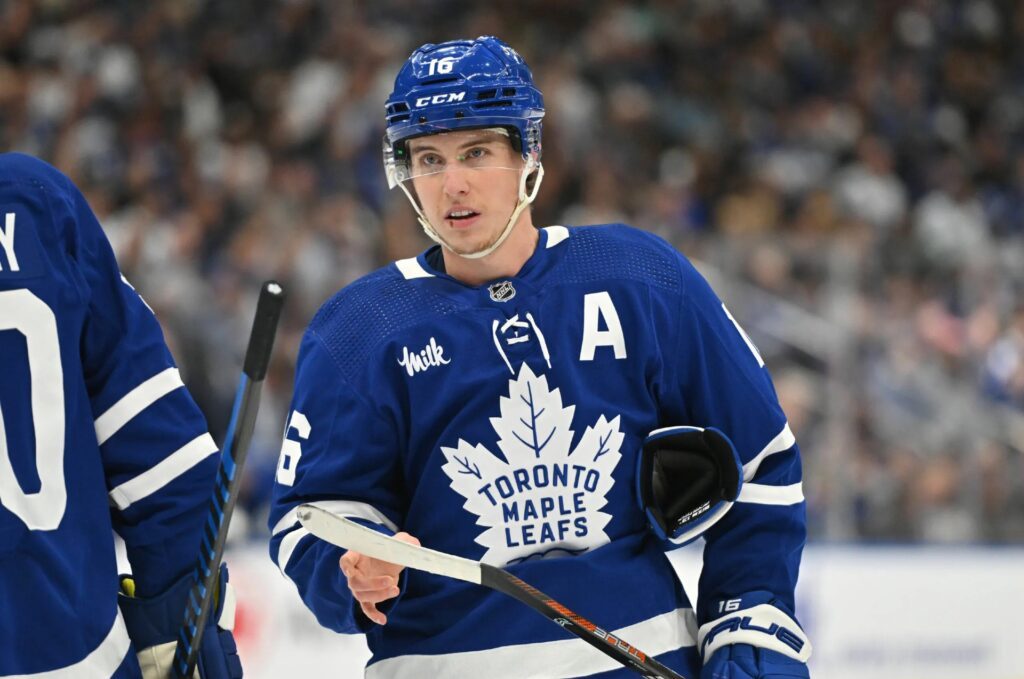
– Some people were surprised by Timothy Liljegren’s $3 million x two-year contract, but the Leafs had the right read on the arbitration case and market for RFA defensemen. Liljegren played 19:40 per game last season and produced at a .42 points per game clip, which would’ve got him paid in arbitration. He was also excellent when Rielly went down.
Henri Jokiharju is the same age as Liljegren, also right-handed, much less productive, and played nearly a minute less on a much worse team. He got a shade more than Liljegren at $3.1. JJ Moser is in a similar boat – produced less, is left-handed, played on a terrible team, played slightly more per night, and signed for $3.38 million x two.
In terms of market value, Liljegren is likely underpaid, but how he plays and slots into the lineup remains to be seen. It’s fair to think that Rielly, Tanev, McCabe, and OEL are ahead of him on the depth chart, so he’s making $3 million as the projected fifth defenseman. He has the potential to be more than that, and OEL isn’t exactly paid as a full-fledged top-four defenseman, so the two of them essentially hedge the #4 spot on the team’s blue line.
– It will be interesting to watch if the Leafs try to extend Jake McCabe this summer. The rest of their defense is already signed through the end of next season, so if they lock up McCabe, they are committed to this group of seven (including Hakanpaa for now), barring a trade.
– It hurt to see the price on the Jakob Chychrun trade: Nick Jensen and a third-round pick. I would have offered much more than this package for a 26-year-old defenseman who scored 14 goals and 41 points last season on a putrid Senators team. I don’t know if the Senators would have traded with the Leafs in this case, but a quality young defenseman moving for a mid-draft pick and a veteran defenseman firmly on the decline is a tough one to watch go by for a Leafs team that really needs quality young defensemen.
– As usual, the Leafs have a built-in schedule disadvantage, playing more times as a tired team vs. a rested team than any other team in the league. This makes two quality goalies even more important for Toronto, as does carrying a bigger roster than the bare minimum of 12 forwards, six defensemen, and two goalies. The ability to rotate players in these situations is more than just a nice to have; it’s a necessity over the 82-game grind. Right now, the Leafs would be unable to hold more than, at best, 12 forwards, seven defensemen, and two goalies based on the Hakanpaa situation.
– I mentioned before free agency that I would have liked to keep Tyler Bertuzzi because his lines were generally strong last season and he brought a bit of a different element to the team. However, at $5.5 million x four years, the price tag was too high for what he delivered, and receiving that paycheque from the Blackhawks more or less sums it up.
– I am curious to see how the Nick Robertson situation plays out. He still needs a contract, and for now, Brad Treliving was right not to discuss it through the media other than to say, “We look at Nick as an excellent player. There is a great opportunity for Nick here. We need him to be a good player for us.”
Robertson produced at a .5 points per game clip last season and scored at roughly a 21-goal pace over 82 despite playing just 11:23 per night. For a team that lost Bertuzzi and added nobody at forward, they can’t just give him away for free. For Robertson, a clear opportunity is available, coupled with a new coach at the helm.
That’s not to say there aren’t moves worth considering. In LA, Arthur Kaliyev is in a similar situation – a talented player who has been sitting, wants out, and needs a new contract. The Islanders have cap troubles and must sort out their Simon Holmstrom situation. He is a player new coach Lane Lambert would be very familiar with (and he was excellent under Lambert with 11 goals in 44 games before falling off under Patrick Roy). It would fit the Leafs’ need to add a penalty killer with some upside.
Those types of swaps make sense – upside player for upside player – as would potentially packaging Robertson along with a player like David Kampf to aim for a 3C solution that would settle their top nine into place. Otherwise, the two sides will need to come to a resolution and see how it goes next season. There’s no question Robertson can score.
– Nick Kypreos mentioned the Leafs may look to trade David Kampf, and it makes some sense with Dewar’s acquisition and Holmberg’s continued growth. However, who would take defensive zone faceoffs on this team without acquiring a proper center?
Kampf took over 150 more defensive zone faceoffs than any other player on the team last season and over 230 more shorthanded faceoffs than any other player. Who is replacing those assignments if they return the exact same group? Dewar and his career 45.5 percent mark? Holmberg and his 44.3 percent rate? Do they want Matthews taking more defensive-zone faceoffs? Tavares?
It’s a small problem that can add up quickly. They need a viable solution to move on from Kampf, and I don’t think they have one internally at the moment. I also don’t think not worrying about it is the smart path. Similar to the penalty-killing situation, the value of defensive forwards seems to be getting a little bit lost in the shuffle.
– I saw Elliotte Friedman note that free agents may have been turned off by the Mitch Marner treatment/situation. Frankly, this is always the case in Toronto. This market is not for everyone, but as always, the Leafs can attract players, too. This is not a Winnipeg Jets situation.
I did think about when Brendan Shanahan – and later Mike Babcock – came into the fold in Toronto and repeatedly talked about making it a “safe” environment for players. This quote from Brendan Shanahan in 2016 stands out:
“When you’re in an environment where you’ve got winners around you, and you feel that it’s a safe place to go to work and to perform, it’s a lot more fun. I think that was what we didn’t have in the past here. I think some players were hung out to dry. I think that there were a lot of distractions. I think, in some ways, off the ice, you could use the expression, “The inmates were running the asylum.”
Well, some eight years later, it feels like it has come full circle. Love him or hate him, the Marner situation is a prime example. Currently, it’s not a safe environment for the player to go to work and perform. It is very difficult to win in this league in the best of circumstances, and this situation is far from that. Winning cures everything, but the Leafs can’t put the cart before the horse. Fixing this should be a priority.
– It’s not a lot of change so far this offseason – which will likely disappoint people – but save for swinging on a Marner trade, their options were always going to be limited. The path taken – paying two defensemen, signing a goalie, retaining one of Domi/Bertuzzi – seemed like the most logical route. If they weren’t going to fetch commensurate value for Marner, it made no sense to hire a new coach and say, “Hey, we’re going to make our roster objectively worse. Now go get us better results!”
If there was a trade that would have moved the needle on defense and/or center, it is a different story, of course. Otherwise, this is not a case of addition by subtraction. Even with straightforward contracts/circumstances, these are difficult trades to make. Patrik Laine is still in Columbus. Nikolaj Ehlers is still on the Jets. Martin Necas is still Carolina property. Pavel Buchnevich just signed an extension after the Blues tested the market for the past six months.



